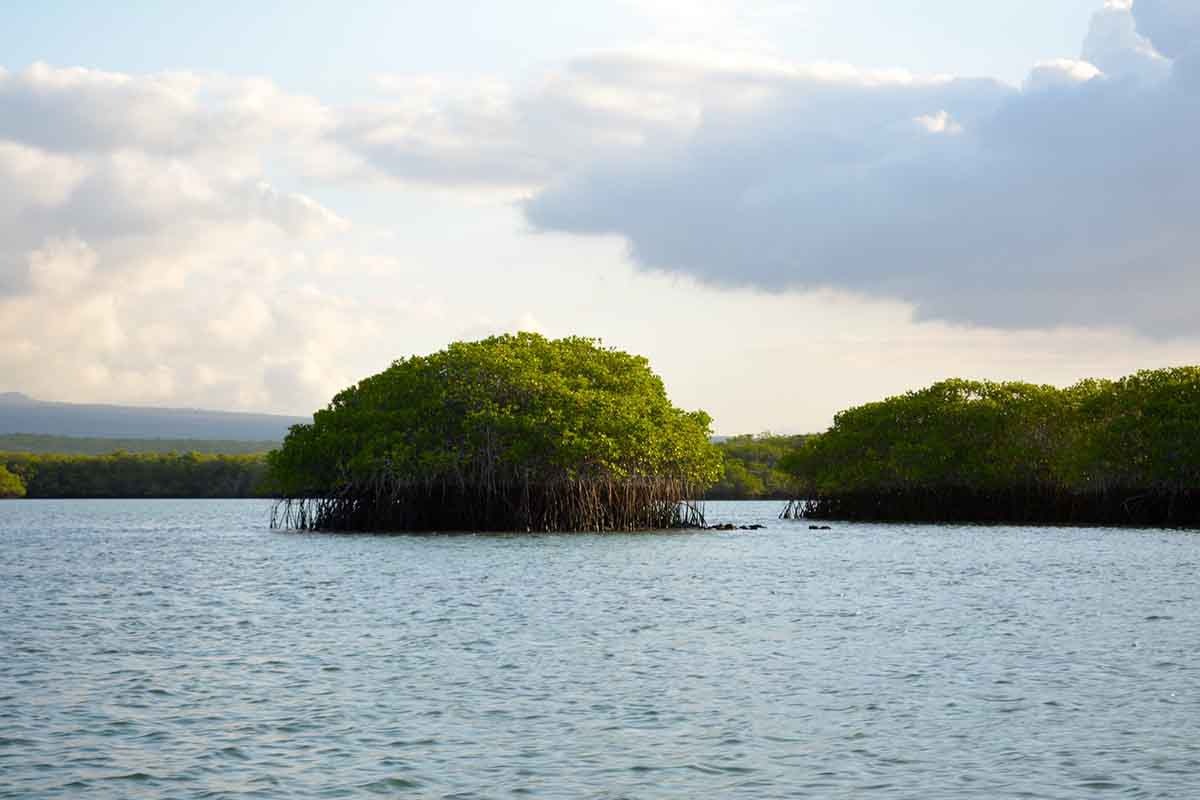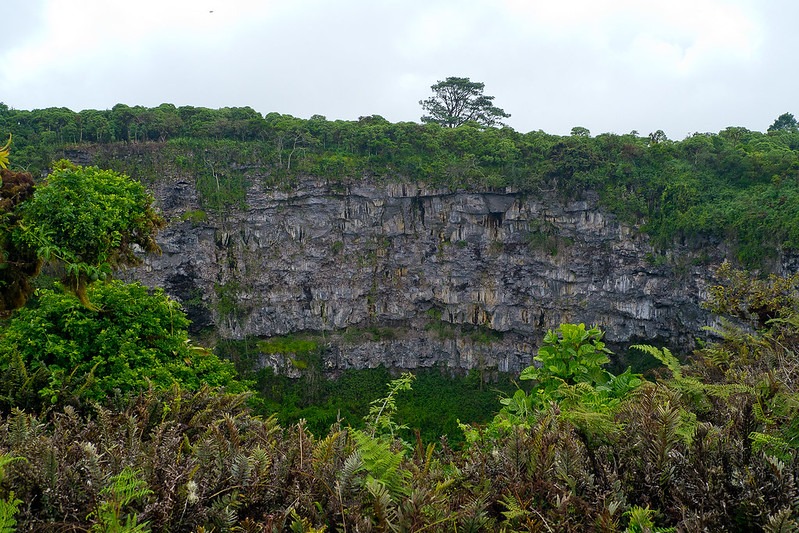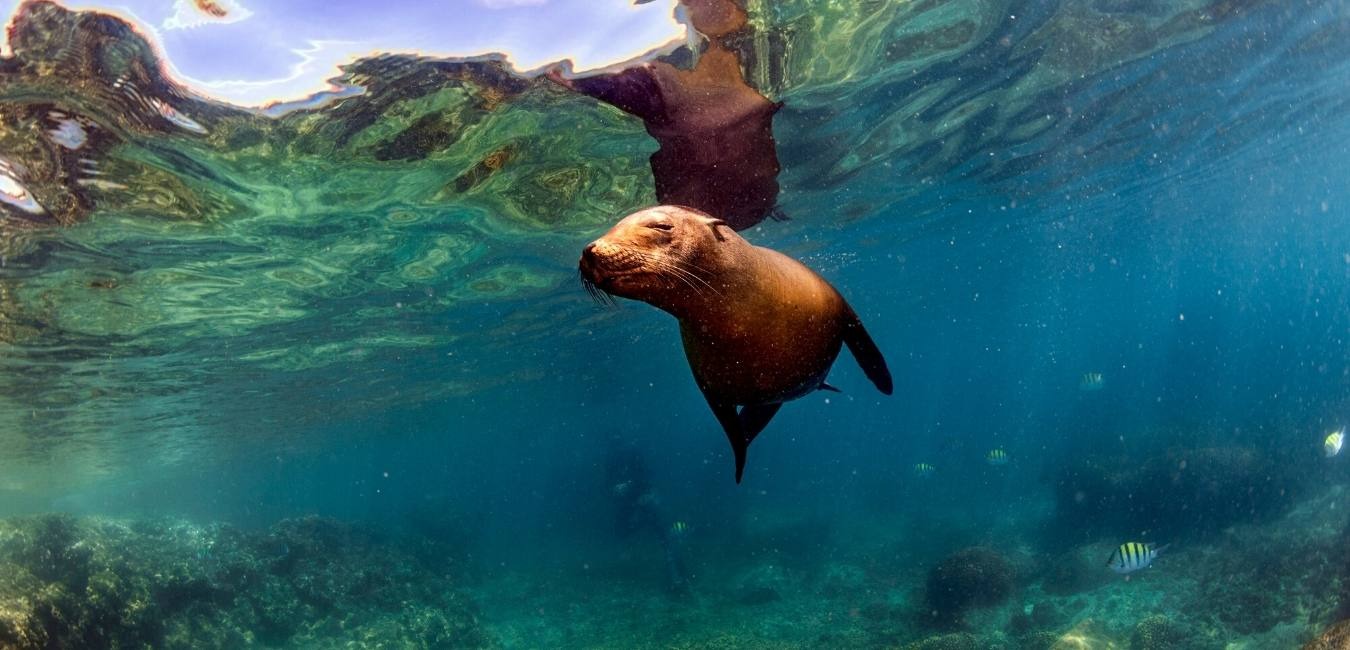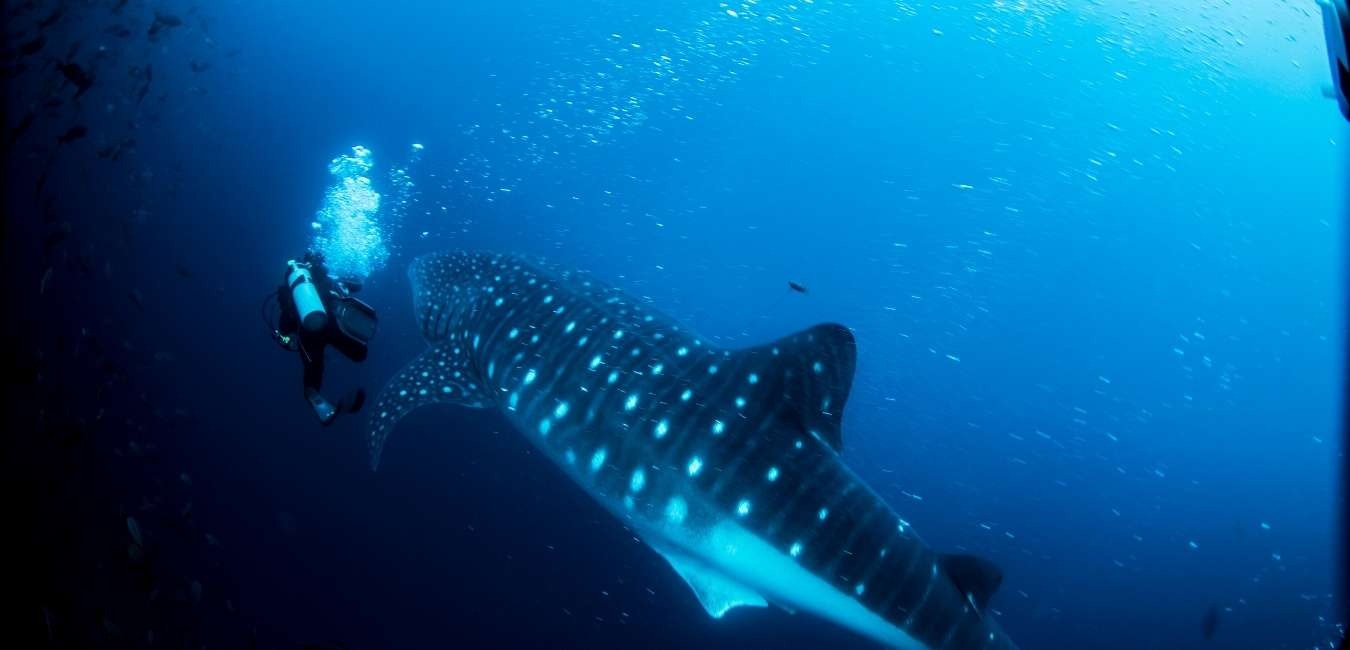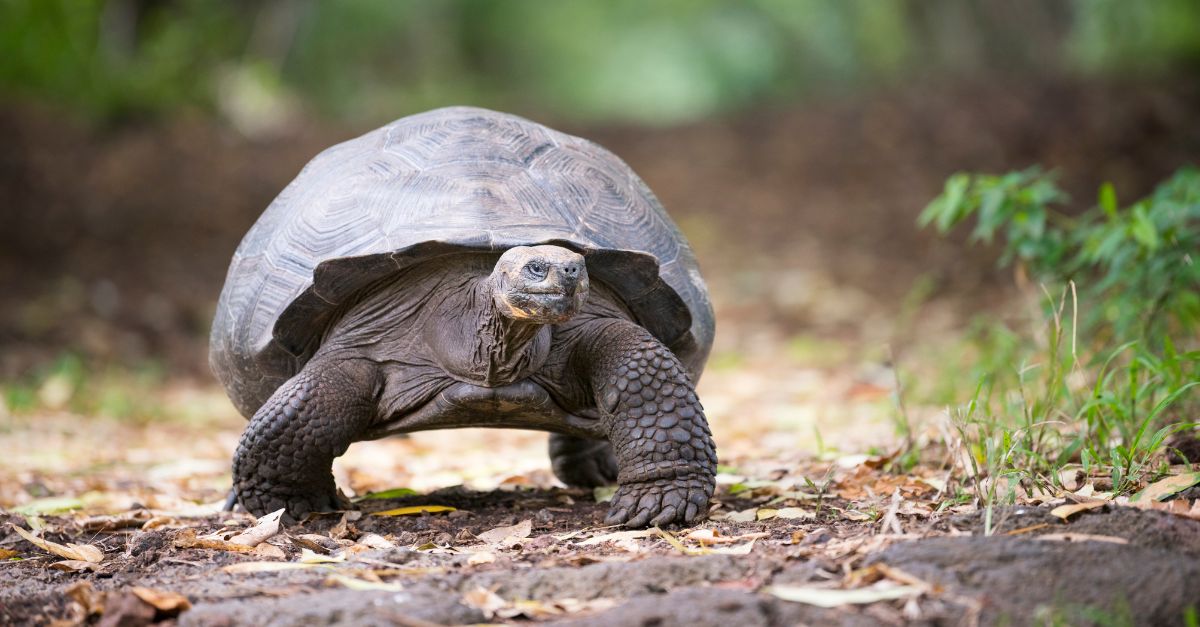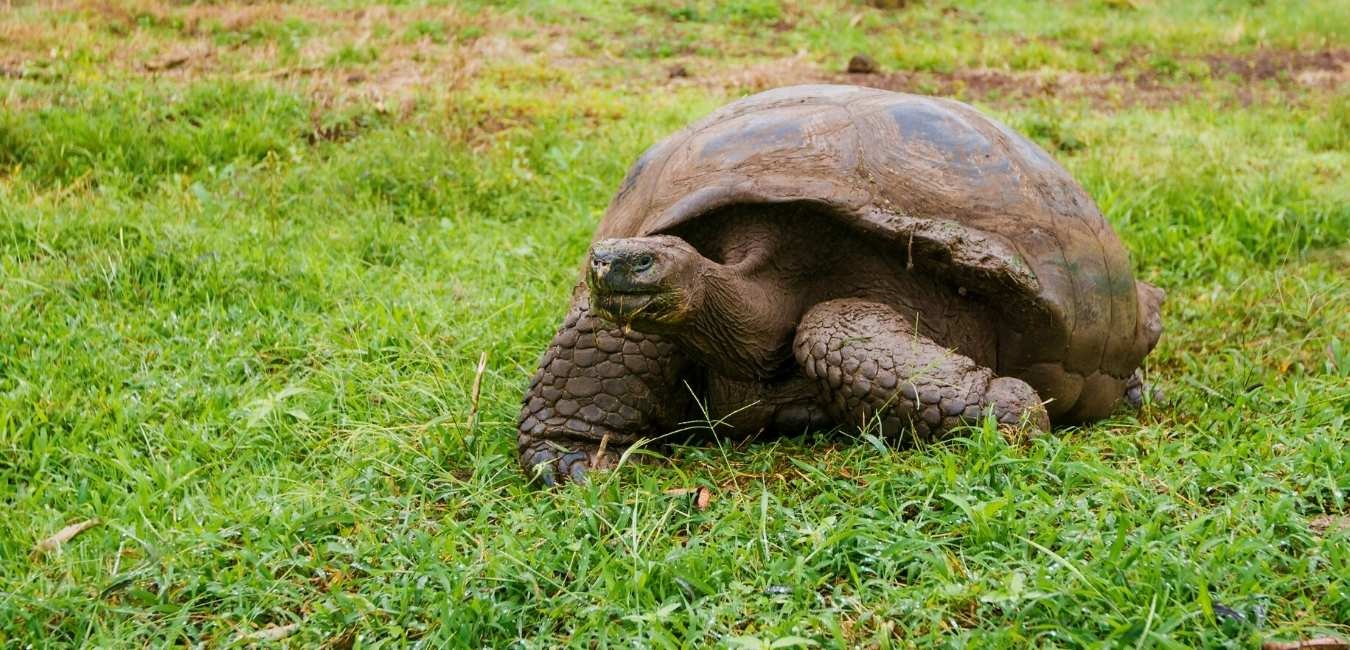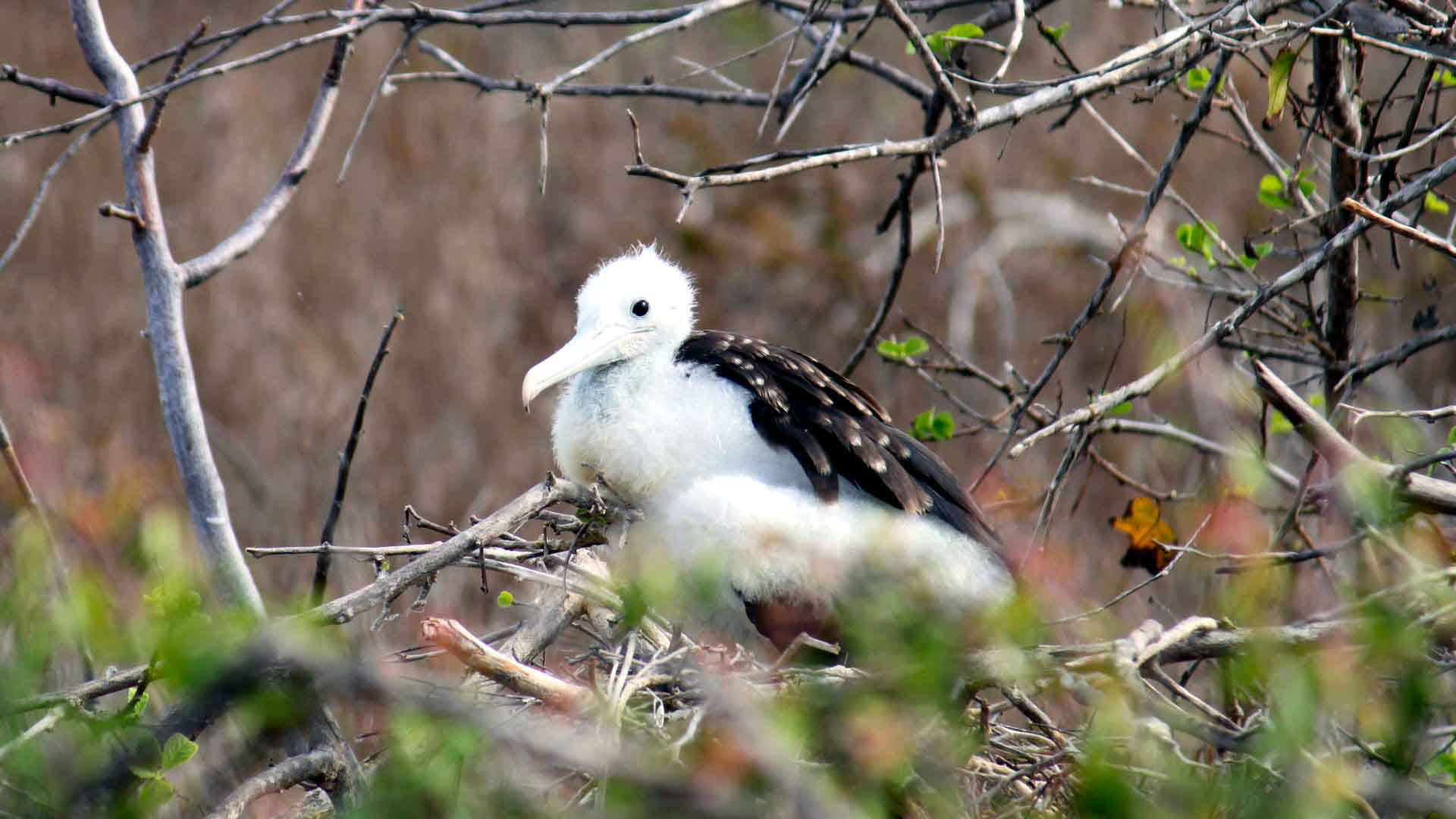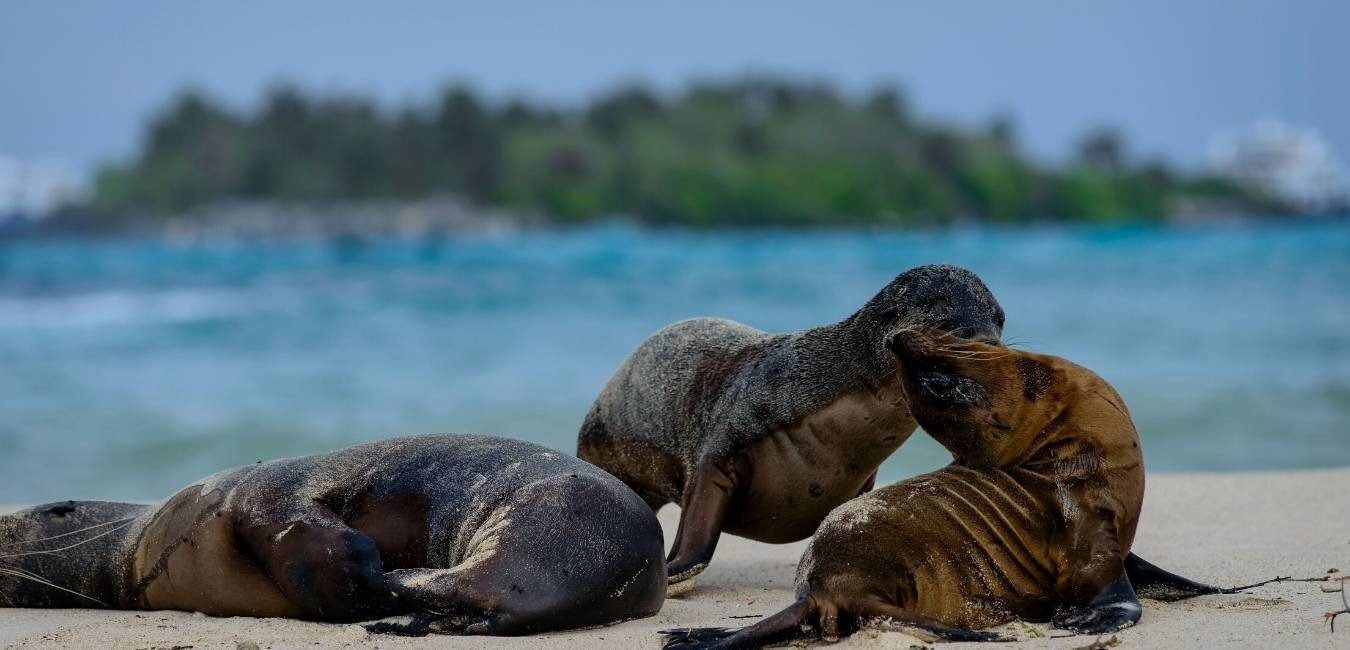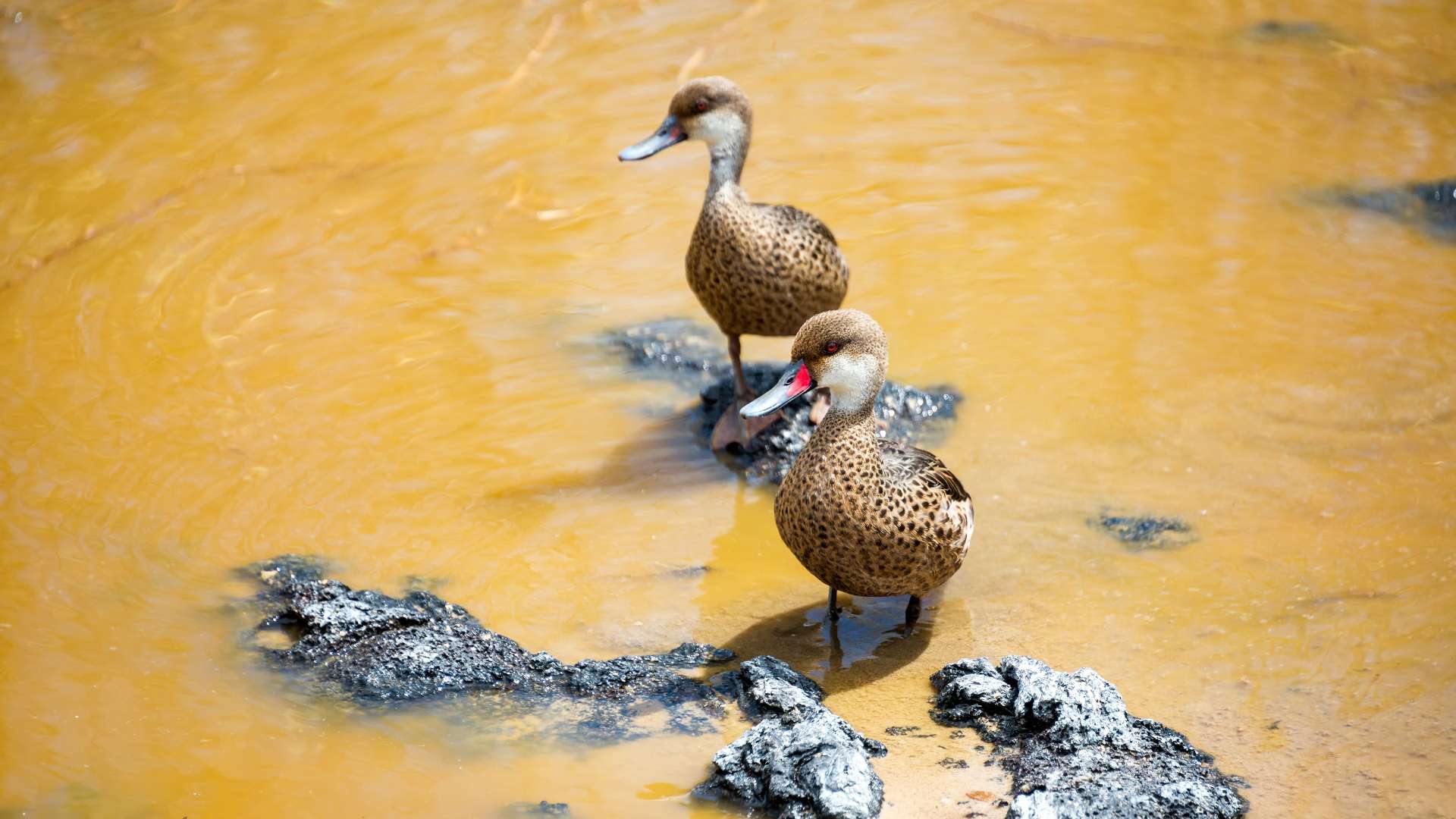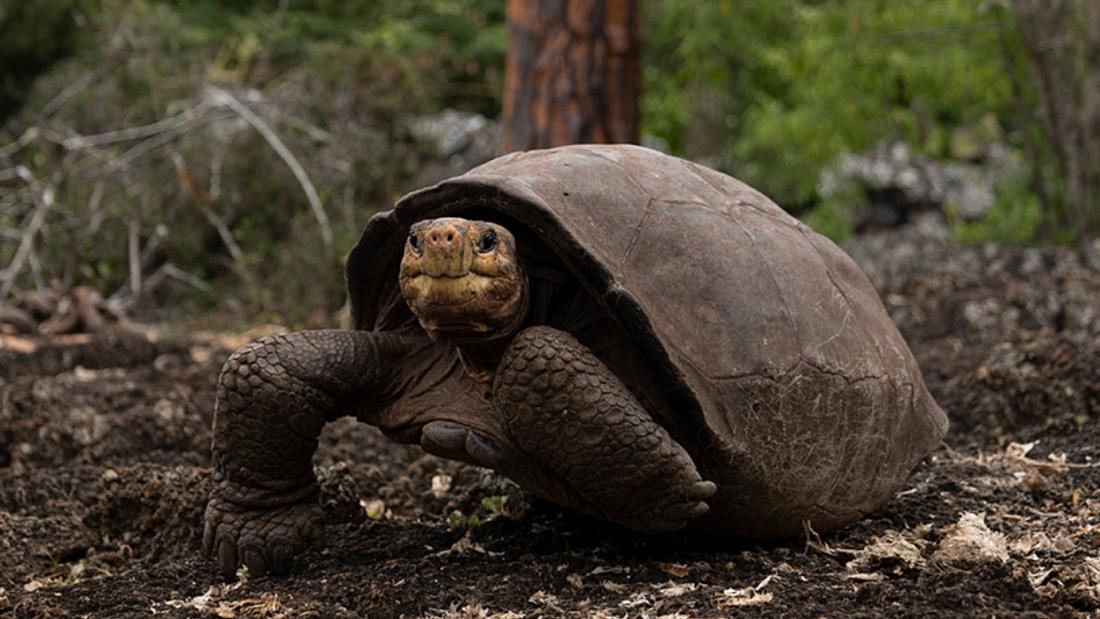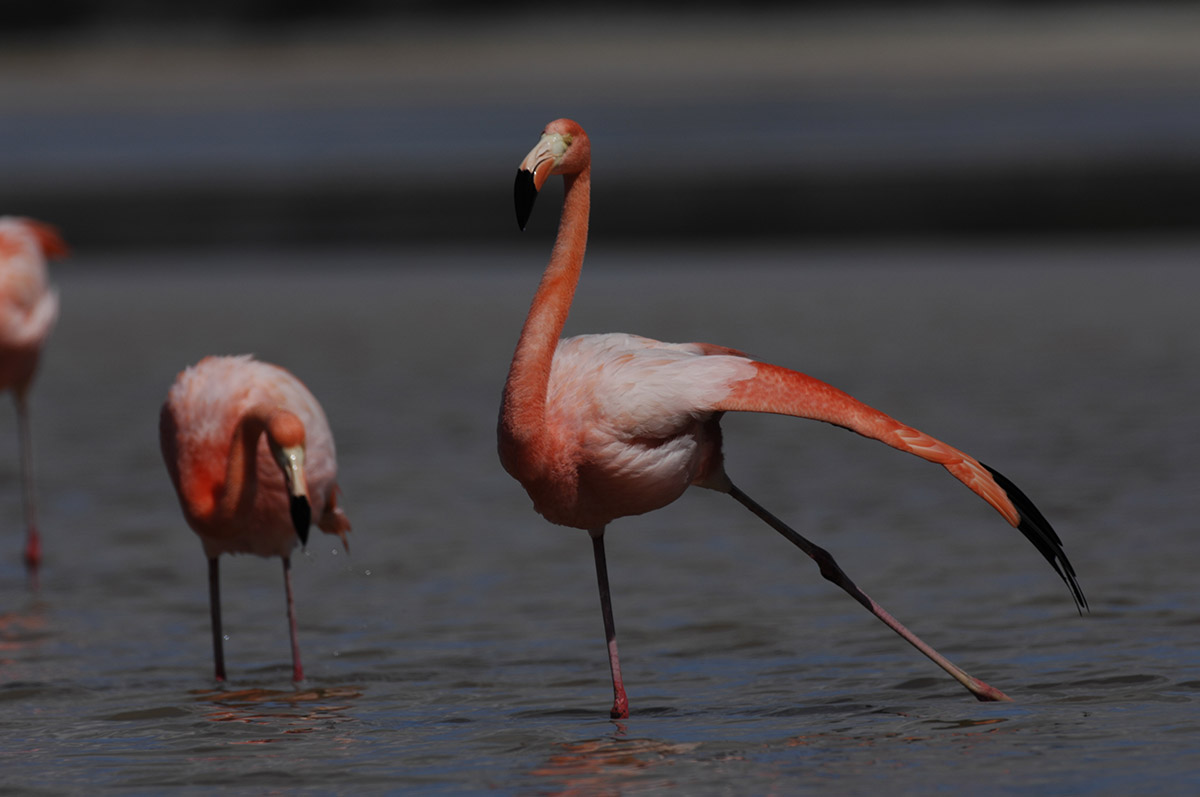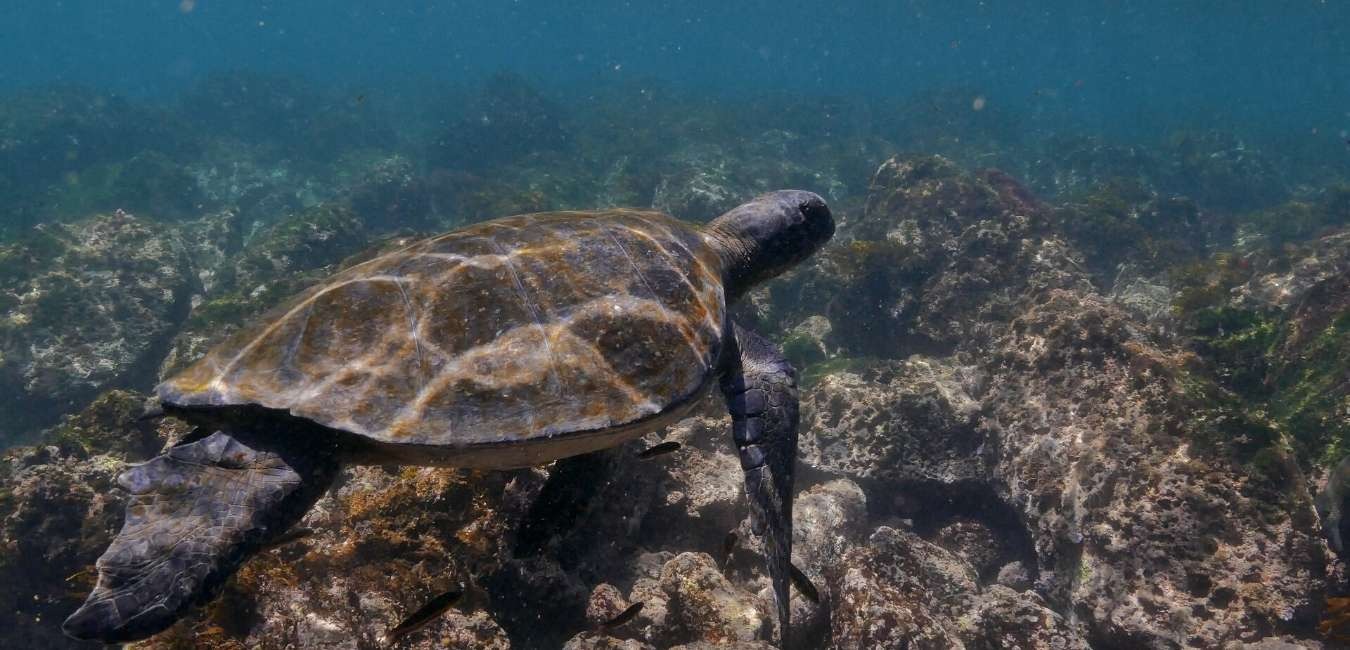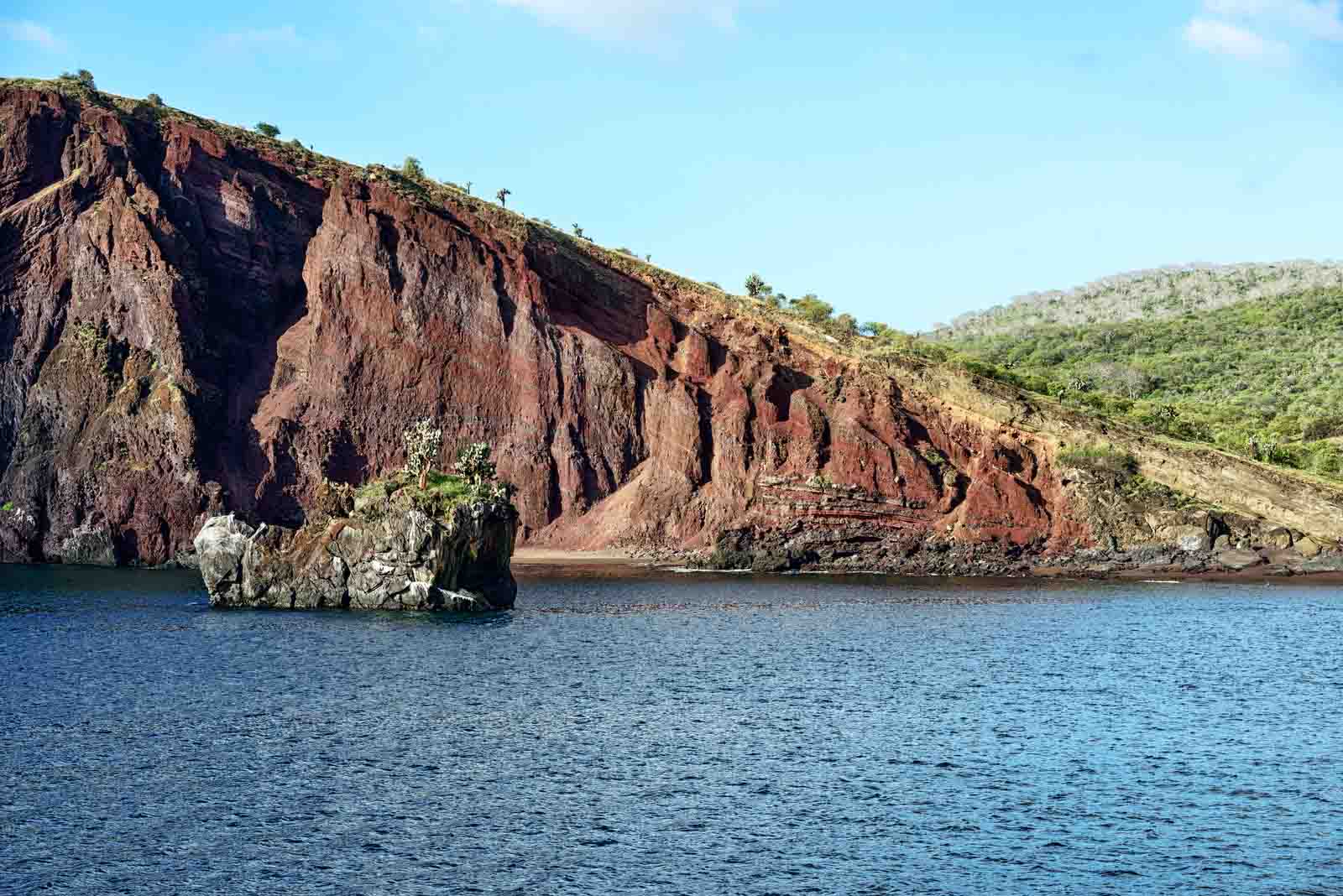This 5-day Galapagos itinerary is a perfect mix of adventure and relaxation. From hiking through volcanic landscapes to snorkeling alongside sharks, rays, and sea lions, every day is packed with unique wildlife encounters. Visit Santa Cruz, Genovesa, and Santiago Islands, explore hidden beaches, and witness the incredible biodiversity of the Galapagos before departing from San Cristobal.
Itinerary
Day 1 : Arrival – Baltra Island & Santa Cruz Island (bachas Beach)
Your journey begins as you arrive at Baltra Airport, where you’ll be greeted and transferred to your vessel.
Bachas Beach – Santa Cruz Island
One of the most breathtaking beaches in the Galapagos, Bachas Beach boasts a long stretch of soft, white sand where sea lions bask and crabs scuttle along the shore. The name “Bachas” originates from a mispronunciation of “barges,” as American military barges landed here during World War II.
This area is also an important nesting site for sea turtles, and visitors are reminded to avoid marked nesting zones to protect the eggs.
Nearby, two saltwater lagoons attract flamingos and other shorebirds. Instead of a traditional hike, guests can enjoy a leisurely stroll along the shore, take a refreshing swim, or snorkel in the tranquil waters.
Day 2 : Genovesa Island – Prince Philip’s Steps & Darwin Bay
Prince Philip’s Steps (El Barranco)
This dramatic rocky stairway leads through a Nazca and red-footed booby colony, ascending to a plateau of dried lava. The thin Palo Santo forest offers spectacular views, where you might witness storm petrels soaring above the ocean.
A panga ride, kayaking, or paddleboarding along the cliffs provides an opportunity to spot the elusive Galapagos fur seals resting on the rocks. Snorkeling in these waters is an exhilarating experience, where you can swim alongside various shark species.
Darwin Bay
A scenic sand and coral beach, Darwin Bay is a prime spot for snorkeling, kayaking, and paddleboarding in calm waters teeming with hammerhead sharks, rays, and colorful reef fish.
Onshore, a short trail winds through mangroves and along a tidal lagoon, home to a variety of land birds, including Nazca and red-footed boobies and swallow-tailed gulls. The trail ends at a scenic viewpoint overlooking the bay, offering breathtaking panoramic views.
Breakfast / Lunch / Dinner
Day 3 : Santiago Island – Espumilla Beach, Buccaneer Cove & Egas Port
Espumilla Beach
Located on Santiago Island’s northern coast, Espumilla Beach features golden sand and is named after the foam-like patterns left by the waves. The abundant Sally Lightfoot crabs attract predatory birds like hawks, herons, and pelicans.
Buccaneer Cove
Once a popular stop for pirates, buccaneers, and whalers seeking fresh water and food, this cove has now become a critical turtle nesting site and a favorite spot for sea lions.
A panga ride along the eroded shoreline showcases unique rock formations that serve as nesting ledges for boobies, pelicans, and gulls. The waters here are ideal for snorkeling, kayaking, or paddleboarding, where you can encounter octopuses, eels, and sharks.
Egas Port
Formerly a salt mining site, Egas Port is now known for its striking black sand beach, a fantastic location for snorkeling and observing shorebirds, Sally Lightfoot crabs, and marine iguanas.
A walk along the inland trails takes you past tidal pools and volcanic grottoes, where you can often find fur seals lounging in the shade.
Breakfast / Lunch / Dinner
Day 4 : Santa Cruz Island – Black Turtle Cove, Highlands & Charles Darwin Research Station
Black Turtle Cove
Situated on the northern coast of Santa Cruz Island, this mangrove ecosystem plays a vital role in the marine environment. The calm waters provide a sanctuary for diverse wildlife, including spotted eagle rays, mustard rays, white-tipped reef sharks, and Pacific green sea turtles.
A zodiac ride through the cove allows for close-up wildlife encounters, where pelicans, herons, and egrets are often seen feeding. Many visitors consider this a highlight of their trip due to its peaceful and immersive atmosphere.
Santa Cruz Highlands & Charles Darwin Research Station
A visit to the highlands of Santa Cruz provides a chance to observe the famous giant tortoises in their natural habitat. These iconic creatures are so closely linked to the islands that they inspired the name “Galapagos.” The highlands are also a great place for birdwatching, with species like Darwin’s finches commonly seen.
At the renowned Charles Darwin Research Station, visitors can learn about conservation efforts aimed at protecting the unique ecosystems of the Galapagos. The station also operates a tortoise breeding program, essential for reviving declining populations. Many of these tortoises are accustomed to human presence, making this an excellent opportunity for close-up photography.
Breakfast / Lunch / Dinner
Day 5 : San Cristobal Island – Lobos Island & Departure
Lobos Island (Sea Lion Island)
Located just off the coast of San Cristobal Island, Lobos Island is named for its large sea lion colony. A short trail winds through the island, offering chances to spot blue-footed and Nazca boobies, marine iguanas, and lava lizards.
The shallow channel between Lobos Island and San Cristobal is one of the best snorkeling spots in the Galapagos. Here, visitors can enjoy up-close encounters with playful sea lions, a truly unforgettable experience.
After the morning excursion, guests will be transported to San Cristobal Airport, where staff will assist with check-in before boarding flights back to mainland Ecuador.

